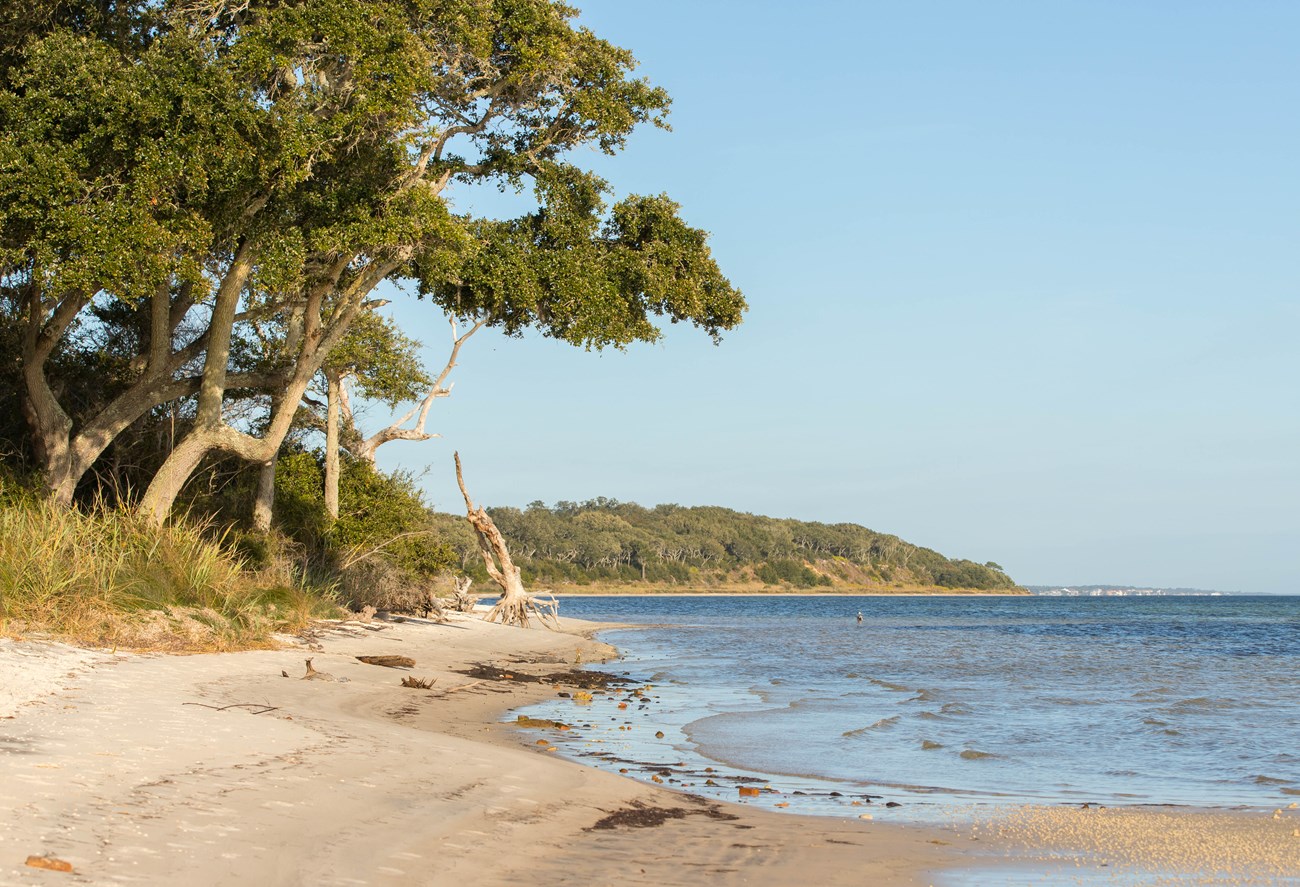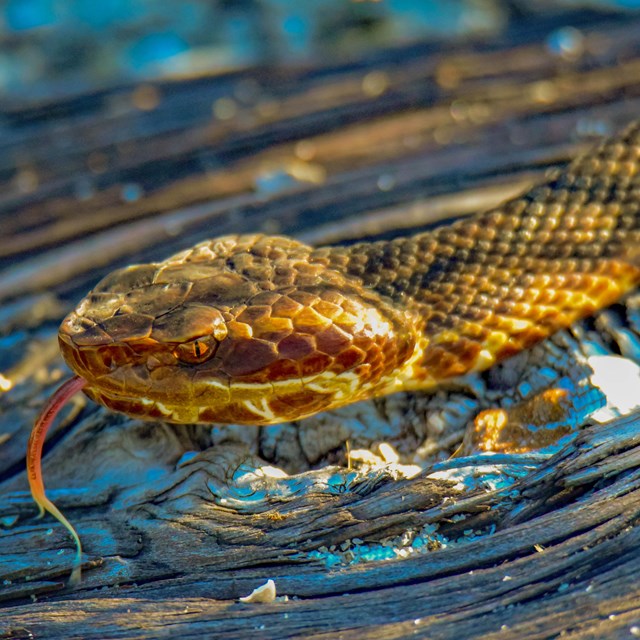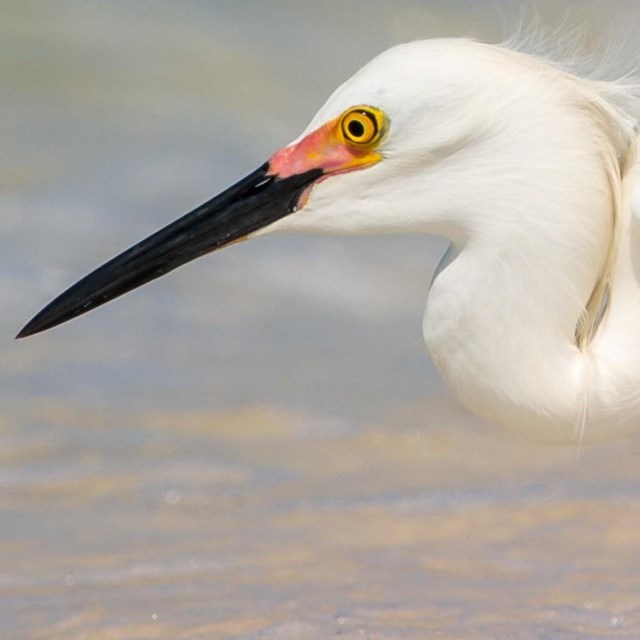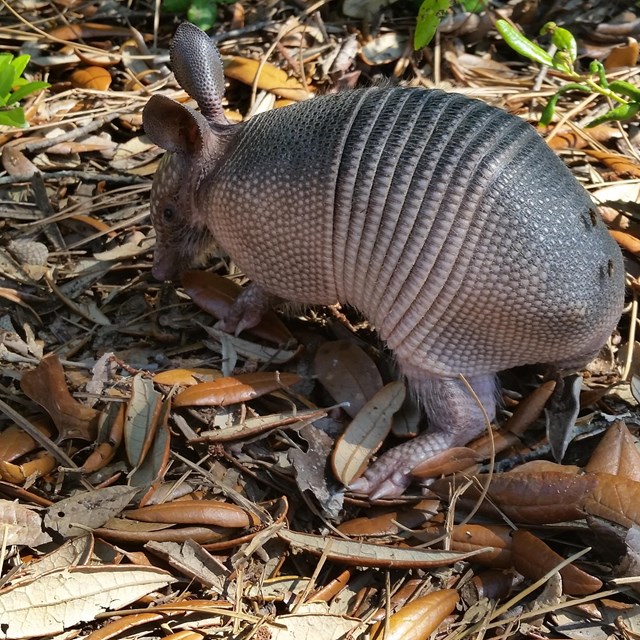
NPS Photo/Owens Maritime forests form on higher elevations than that of shoreline wetlands or dunes. They rely on a freshwater source but can tolerate salt water exposure such as salt spray. These forests thrive in sandy soil comprised of rich sedimentary deposits. Able to withstand bouts of extreme weather, they protect more vulnerable inland resources. Like the barrier islands they sometimes call home, maritime forests are ever-changing, subject to flooding, erosion, and shifting land. Common species of trees and shrubs found in the maritime forests of the park include Live Oak, Southern Magnolia, Waxed Myrtle, and Red Cedar.
These forests provide essential habitat and haven for migratory birds and other animals. They play a key role in holding the shorelines of coastal areas and barrier islands together. This is due to a strong network of expanding roots that corral unstable sand. The combination of sand, roots, and the trees they anchor, form the natural barrier that gives the islands their name.
Maritime forests have become less prevalent over the years due to the many threats they face. Climate change and coastal development have reduced these woodlands to small patches in areas where they once thrived. The ever-changing nature of the barrier islands themselves poses a threat to maritime forests as well. As the islands move west, their forests get left behind, becoming submerged in the salt and brackish waters.
Animals in this ecosystem
Gulf Islands ResidentsAnimals
|
Last updated: April 21, 2020



